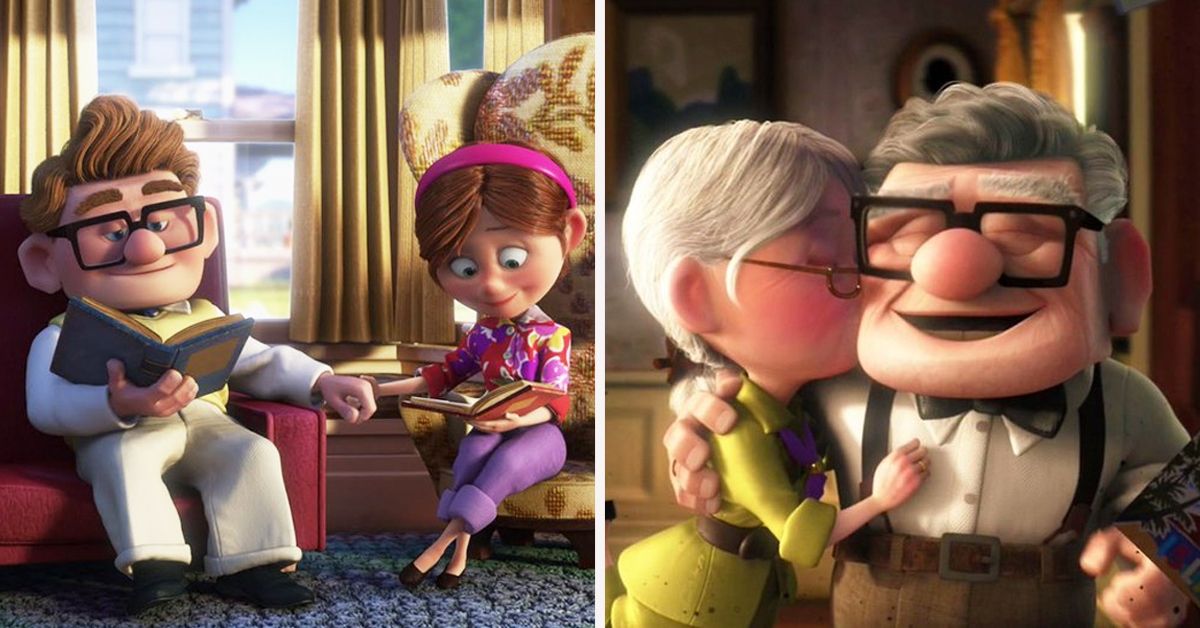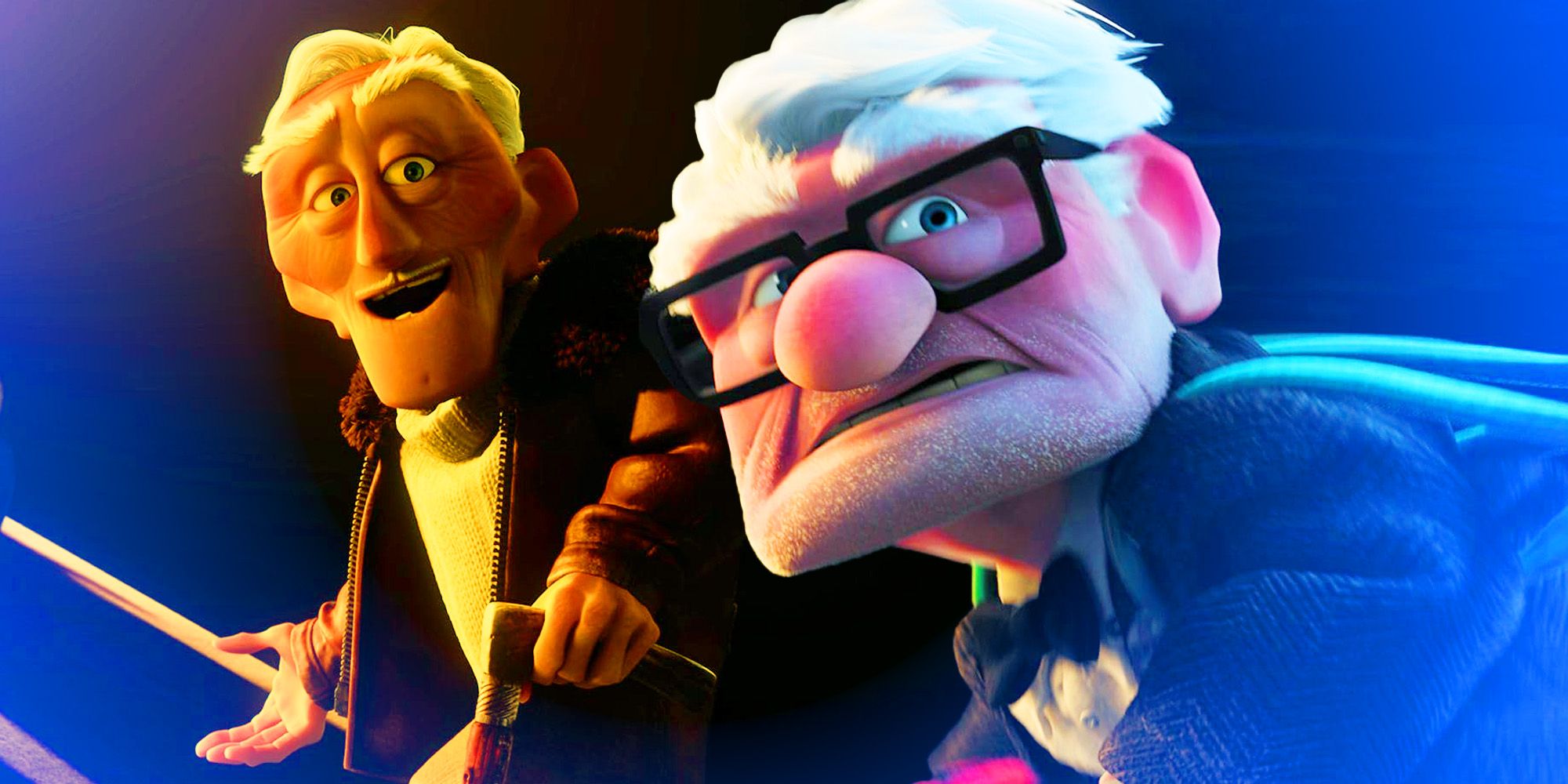Pixar's Up is a film that stands out not just for its unique story but for the profound emotional depth it brings to the screen. It’s a beautiful mix of adventure, heartache, and redemption that speaks to audiences of all ages. But, does it still hold up today 15 years later? Wow, that's weird to say. Let's take a look.
.jpg) |
| Image by Wikipedia |
The Heart-Wrenching Beginning
From the moment Up starts, Pixar grabs you by the heartstrings and doesn’t let go. The opening montage of Carl and Ellie’s life together is one of the most emotionally potent sequences in recent memory. We watch them grow from childhood sweethearts to an elderly couple, facing the highs and lows of life together. This includes a gut-wrenching moment where they lose their unborn child, a daring move for an animated film but one that pays off in grounding the story in real, relatable human experiences.It’s rare for a film, especially an animated one, to handle such heavy topics with grace and subtlety. Pixar doesn’t shy away from the complexities of life’s trials and tribulations, and in doing so, they create a narrative that resonates deeply. Carl’s subsequent grief and his inability to move on after Ellie’s death form the emotional core of the movie. You feel more for Carl in those first 10 minutes than you do for entire casts of other films.
 |
| Image by TheThings |
Carl’s Journey: From Grief to Growth
Carl’s character arc is the film’s backbone. We see him as a bitter, grieving old man, stuck in the past and resistant to change. His journey, physically represented by his house lifted by thousands of balloons, symbolizes his emotional journey towards letting go. The house, full of memories with Ellie, serves as a poignant metaphor for his attachment to the past. When he finally lets it go, it's not just the house he’s releasing—it’s Ellie, and the life they planned but could never have. Subtly, this is shown throughout the movie by a small amount of balloons being released from the floating house from time to time the happens to correlate when Carl accepts something new or facing something he didn't want to.His relationship with Russell, the eager boy scout, is intended to show Carl’s transformation and his acceptance of new adventures. While their bond is heartwarming and provides moments of levity, it feels somewhat forced. Carl’s transition from a grumpy recluse to a willing protector and mentor to Russell could have been more naturally developed. The setup was there, with Carl and Ellie’s longing for a child, but the execution missed a few key emotional beats. A moment where Carl explicitly connects his care for Russell to the child he and Ellie lost would have solidified this relationship for both adults and children watching.
 |
| Image by The New York Times |
Fantastical Elements and Emotional Depth
The movie’s fantastical elements—talking dogs, floating houses, and exotic birds—are where it truly shines for a younger audience. Dug, the talking dog, provides comic relief and his “squirrel!” moments are undeniably amusing. Yet, for me, this whimsical addition slightly detracted from the film’s emotional depth. The shift from a deeply moving narrative to scenes of talking dogs can feel jarring, pulling you out of the poignant journey of Carl’s emotional rediscovery.The film also touches on how society idolizes certain figures, only to reveal their flaws. Carl’s encounter with his childhood hero, Charles Muntz, brings a harsh reality check. Muntz, once a revered explorer, turns out to be a deeply flawed and dangerous man. It’s a sobering reminder that our idols can have feet of clay, but this subplot feels a bit undercooked and doesn’t fully mesh with the rest of the story’s emotional resonance. On top of this, I'm not really sure how many children will follow their back story enough for the emotional weight to really take shape for them. Also, and I know this is being nitpicky a bit, but when Charles goes missing, Carl might be, what, 10, and Charles was a man already exploring, likely in his late 20's at the very earliest. When they meet later in the movie, Carl must easily be over 60 now, making Charles easily in his late 80's to early 90's. Charles doesn't act or seem anywhere near that old. If there is some fountain of youth in this magical part of the world, they never mention it. Just a weird thing that I know doesn't matter, but it was a choice that Pixar made that makes me scratch my head a bit.
 |
| Image by Screen Rant |
The Big City vs. Personal Memories
Another standout aspect is the depiction of Carl’s struggle against modernity. The relentless encroachment of the city, with developers trying to buy his house to build a shopping mall, highlights the clash between personal memories and societal progress. To the developers, Carl’s house is just a piece of land. To Carl, it’s a vessel of cherished memories with Ellie. This conflict adds another layer to the narrative, illustrating how easily society can overlook individual histories in the face of economic growth. |
| Image by Hollywood Reporter |
A Colorful and Unique Adventure
Visually, Up is stunning. The colorful balloons that lift Carl’s house are a beautiful symbol of his journey and add a magical touch to the story. The film's adventurous spirit, with Carl and Russell navigating a strange land filled with unusual creatures, keeps you engaged. It strikes a balance between being "out there" and grounded enough to maintain the suspension of disbelief. |
| Image by Mental Floss |
Final Thoughts
Carl’s journey from grief to rediscovery, set against the backdrop of a colorful and whimsical adventure, makes Up a unique and unforgettable experience. It’s a film that will have you laughing, crying, and reflecting on the importance of letting go and embracing new possibilities. My overall score? A solid 8 out of 10. It didn’t reinvent the wheel, but it sure added a memorable story to the collection of films I can watch again and again.Pros:
Cons:
Comments
Post a Comment